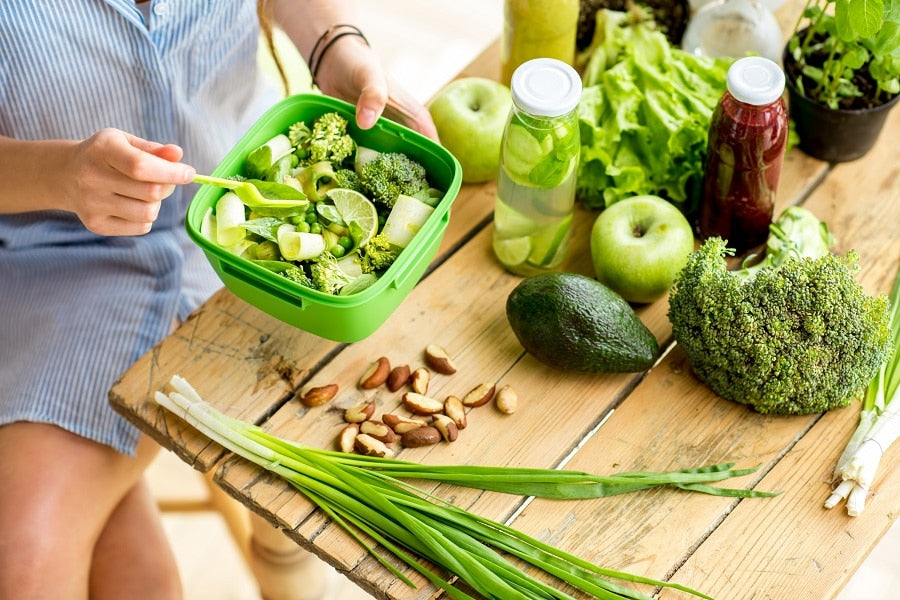
Eat More Fiber to Stay Healthy
For decades, nutritionists have argued eating more fiber helps you lose weight and keeps you lean. Ample research backs this up. Studies show those who get more fiber in their diets have a healthier body weight, less fat, and a better body mass index (BMI), even after adjusting for other factors. But, exactly why eating fiber keeps you healthy has been a bit of a mystery.
Until now. Like so many other health issues, it all comes back to your gut. The health of your gut affects everything from your immune system to your moods. More and more studies connect poor gut health to inflammation, and pretty much every disease on the planet including obesity. Sadly, our contemporary diet, full of sugar and processed food, wreaks havoc on the delicate balance of bacteria in the gut, causing good bacteria to decrease while bad bacteria flourishes. Luckily there are things we can do to create a healthier gut and getting the right amount of fiber to feed the good bacteria in our gut is key.
Why fiber?
It pretty much comes down to this: the good bacteria in your gut has a favorite food…it’s fiber. You see, our digestive enzymes don’t break down the fiber we eat from vegetables and other sources. So the fiber remains intact as it moves through our digestive tract. And as it travels, the healthy microbes in our gut feed off the fiber’s vitamins, nutrients, and short-chain fatty acids (SCFAs).
When we don’t get enough fiber, these microbes starve and then can react in different ways. Some die off. Others start eating the gut’s mucus lining. This can make the gut wall become permeable, a.k.a leaky gut syndrome, and prone to infection. And then our immune system starts getting weak, inflammation can begin, and we become more susceptible to obesity.
How much fiber do we need?
Here’s your goal: Add more – sometimes way more – fiber-rich foods into your diet on a daily basis. The “daily basis” part of eating fiber is a key here. Animal studies have found that eating adequate fiber even every other day can reduce the gut mucous layer by 50% compared to getting enough fiber daily. And researchers have found in humans that the balance of bacteria in the gut can quickly change for the worse as soon you stop getting enough fiber. In general, women should get at least 25-30 grams of fiber daily, while men should get at least 30-38.
Sadly, researchers find the average fiber intake of American adults is less than half recommended levels. If you’re eating a lower-carb diet, that number could be is even lower, since you might not be eating as many fruits, grains, legumes, and even vegetables. Comparatively, researchers find our hunter-gatherer ancestors got about 100 (yes, 100!) or more grams of fiber daily from roots, berries, leaves, and other plants. Sure, our Paleolithic ancestors had other problems (running into a saber-tooth tiger could really mess up your day!), but many modern diseases like cancer were not among them.
So what are the best sources of fiber?
The standard answer you’ll hear is “vegetables, fruits, and whole grains.” But whole grains have negative effects that cancel out their benefits, such as the presence of phytic acid, which interferes with the absorption of calcium, copper, iron, magnesium, and zinc. So I highly recommend getting your fiber primarily by eating lots of vegetables, along with modest amounts of fruits, nuts, and seeds. Among my A-lister fiber sources include avocado, leafy and cruciferous veggies like broccoli and spinach, raw almonds, and berries.
And don’t forget some prebiotic fiber…
Prebiotics are a type of dietary fiber that literally feed your good gut flora. Prebiotic fiber resists digestion, instead heading to your colon where it creates those awesome energy-producing short chain fatty acids. Prebiotics fall into several categories, including fructans and resistant starch. Each type feeds different healthy gut flora, and they’re all amazing.
To fit more prebiotics in your diet, you can always supplement. I like inulin powder (it has a mildly sweet taste). You can also get prebiotics from food. Some of my favorites include raw chicory root, Jerusalem artichoke, dandelion greens, garlic, and onions. I have patients combine these prebiotic-rich foods with foods rich in gut-friendly soluble fiber like apples, ground flaxseeds, and nuts. These fiber-rich rock stars steady your blood sugar response to keep you fuller longer, while they feed your good gut bacteria.
Other ways to get adequate fiber…
Even the best of us – myself included – sometimes struggle to get that amount of fiber from food sources. I don’t often find fresh kale salads at airports, and good luck finding enough fiber-rich foods when you’re at a roadside diner or gas station. That’s among the reasons why I created my Collagen Fiber Bar in Chocolate Coconut. Every decadent bar contains an impressive 11 grams of prebiotic fiber, which feeds your healthy gut flora while keeping you full longer so you stay lean and focused. The best part? It taste just like a candy bar, but without the guilt. Getting enough fiber can also help you:- Reduce the risk of type 2 diabetes
- Ward off some types of cancer
- Improve blood cholesterol
- Keep blood pressure in check
So if you want to look and feel your absolute best, eat your fiber!
Keep thinking Big and living BOLD!








